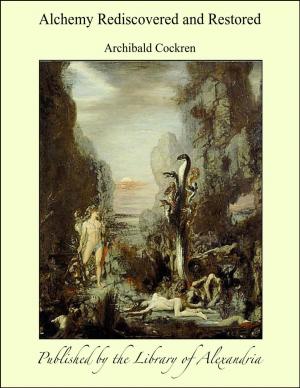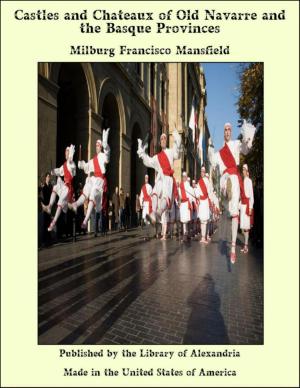Renaissance in Italy: Italian Literature
Nonfiction, Religion & Spirituality, New Age, History, Fiction & Literature| Author: | John Addington Symonds | ISBN: | 9781465602961 |
| Publisher: | Library of Alexandria | Publication: | March 8, 2015 |
| Imprint: | Language: | English |
| Author: | John Addington Symonds |
| ISBN: | 9781465602961 |
| Publisher: | Library of Alexandria |
| Publication: | March 8, 2015 |
| Imprint: | |
| Language: | English |
This work on the Renaissance in Italy, of which I now give the last two volumes to the public, was designed and executed on the plan of an essay or analytical inquiry, rather than on that which is appropriate to a continuous history. Each of its four parts—the Age of the Despots, theRevival of Learning, the Fine Arts, and Italian Literature—stood in my mind for a section; each chapter for a paragraph; each paragraph for a sentence. At the same time, it was intended to make the first three parts subsidiary and introductory to the fourth, for which accordingly a wider space and a more minute method of treatment were reserved. The first volume was meant to explain the social and political conditions of Italy; the second to relate the exploration of the classical past which those conditions necessitated, and which determined the intellectual activity of the Italians; the third to exhibit the bias of this people toward figurative art, and briefly to touch upon its various manifestations; in order that, finally, a correct point of view might be obtained for judging of their national literature in its strength and limitations. Literature must always prove the surest guide to the investigator of a people's character at some decisive epoch. To literature, therefore, I felt that the plan of my book allowed me to devote two volumes. The subject of my inquiry rendered the method I have described, not only natural but necessary. Yet there are special disadvantages, to which progressive history is not liable, in publishing a book of this sort by installments. Readers of the earlier parts cannot form a just conception of the scope and object of the whole. They cannot perceive the relation of its several sections to each other, or give the author credit for his exercise of judgment in the marshaling and development of topics. They criticise each portion independently, and desire a comprehensiveness in parts which would have been injurious to the total scheme. Furthermore, this kind of book sorely needs an Index, and its plan renders a general Index, such as will be found at the end of the last volume, more valuable than one made separately for each part.
This work on the Renaissance in Italy, of which I now give the last two volumes to the public, was designed and executed on the plan of an essay or analytical inquiry, rather than on that which is appropriate to a continuous history. Each of its four parts—the Age of the Despots, theRevival of Learning, the Fine Arts, and Italian Literature—stood in my mind for a section; each chapter for a paragraph; each paragraph for a sentence. At the same time, it was intended to make the first three parts subsidiary and introductory to the fourth, for which accordingly a wider space and a more minute method of treatment were reserved. The first volume was meant to explain the social and political conditions of Italy; the second to relate the exploration of the classical past which those conditions necessitated, and which determined the intellectual activity of the Italians; the third to exhibit the bias of this people toward figurative art, and briefly to touch upon its various manifestations; in order that, finally, a correct point of view might be obtained for judging of their national literature in its strength and limitations. Literature must always prove the surest guide to the investigator of a people's character at some decisive epoch. To literature, therefore, I felt that the plan of my book allowed me to devote two volumes. The subject of my inquiry rendered the method I have described, not only natural but necessary. Yet there are special disadvantages, to which progressive history is not liable, in publishing a book of this sort by installments. Readers of the earlier parts cannot form a just conception of the scope and object of the whole. They cannot perceive the relation of its several sections to each other, or give the author credit for his exercise of judgment in the marshaling and development of topics. They criticise each portion independently, and desire a comprehensiveness in parts which would have been injurious to the total scheme. Furthermore, this kind of book sorely needs an Index, and its plan renders a general Index, such as will be found at the end of the last volume, more valuable than one made separately for each part.















